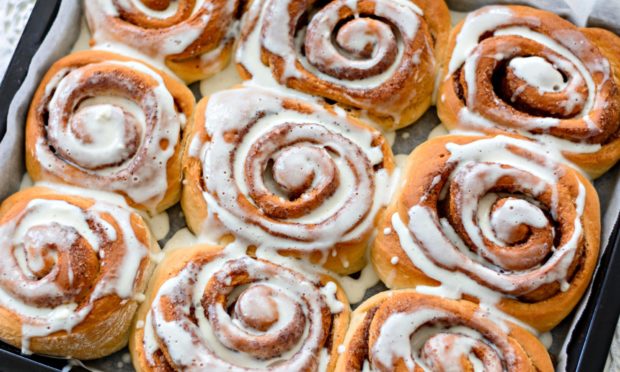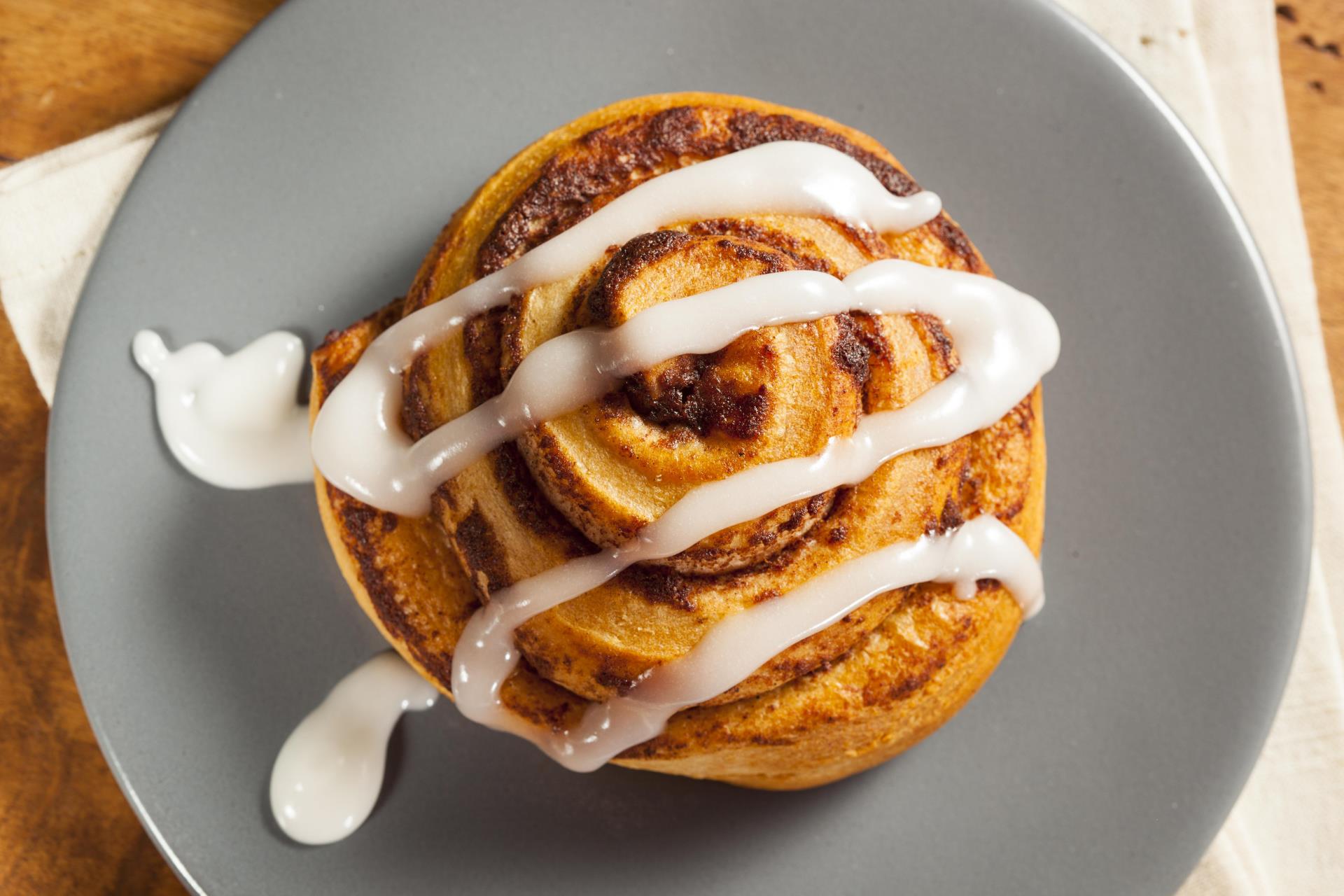As the coronavirus restrictions continue, baking is still a popular past-time, and it seems there’s a new kid on the block when it comes to the nation’s favourite homemade treat…
When the country first went into lockdown back in March it seemed all anyone was baking was banana bread.
Fast forward eight months with restrictions back to being tightened across the country, the change of season has seen searches soar for a new treat.
Searches for ‘cinnamon buns’ and ‘cinnamon rolls’ are up 320 to 400% year on year. And views on Waitrose & Partner’s recipe with Bake Off star Martha Collison’s cinnamon rolls are up 692% in comparison to last year.
The firm also said sales across the home baking range are “already up 60% compared to last year”, too.
The recipe involves a rolled sheet of dough being covered with a thin coat of butter, over which ingredients including cinnamon, sugar and sometimes raisons are sprinkled. The dough is then curled and cut into individual portions and baked or deep fried.
Cinnamon buns originate from the Roman times, when spice traders introduced Sri Lankan cinnamon to Europe.
The baked good, or kanelbulle as it is known in Sweden and Denmark where the pasty is most popular, even has its own national day dedicated to it with Cinnamon Roll Day taking place on October 4.
As well as being known as cinnamon buns, they are also commonly referred to as cinnamon rolls, cinnamon swirls, a cinnamon Danish, and a cinnamon snail.
As well as the recipe from Martha Collison we’ve featured at the bottom of this article, British Food Instagrammer Eloise Head who runs Instagram page Fit Waffle Kitchen has also shared a quick and easy recipe which sees her make the delicious Danish delicacy in a mug – and with just seven ingredients.
Quick and easy recipe in a mug with seven ingredients…
Martha’s Cinnamon Buns
(Serves 12 – they are also vegetarian)
Ingredients
For the dough
- 75g butter
- 100ml semi-skimmed milk
- 250g plain flour
- 250g strong plain flour
- 7g easy bake/quick yeast
- 25g caster sugar
- 2 medium free range eggs
- Oil, for greasing
For the filling
- 125g butter, softened
- 150g dark brown soft sugar
- 1½ tsp ground cinnamon
- ½ tsp ground nutmeg
For the topping
- 25g butter, softened
- 50g cream cheese
- 100g icing sugar
- ½ tsp vanilla extract
Method
1. Cut the butter into cubes and place into a saucepan with the milk. Warm over a low heat until the butter melts, then set to one side to allow the mixture to cool.
2. Place the flours into a large bowl and add the yeast and sugar. Add 100ml warm water to the milk and butter mixture, then beat in the eggs. Gradually add this to the dry mixture, stirring all the time, until a sticky dough forms. You may not need all the milk mixture – you want to add just enough so you have a sticky but not wet dough.
3. Turn the dough out onto a lightly oiled surface and knead for 10-15 minutes or until it is no longer sticky and has become smooth and elastic. Place into an oiled bowl, cover, and leave in a warm place for one to two hours or until the dough doubles in size.
4. To make the cinnamon filling, beat together the soft butter with the sugar, cinnamon and nutmeg until it is a smooth paste. Set aside. When the dough has risen, turn it out onto the oiled surface and fold it in on itself a couple of times to knock out any large air bubbles. Then roll it out to a large rectangle approximately 40x60cm (1.5 times as long as it is wide), getting it as thin as possible.
5. Use a spatula or palette knife to spread the cinnamon filling over the dough in an even layer. Then, starting at the shorter edge, tightly roll the dough up into a log. Trim the ends and divide the dough into 12 even-sized pieces (see cook’s tip, below). Place into a baking tin leaving a few centimetres between each to allow them to rise.
6. Cover the buns loosely with a clean tea towel and leave to rise for 30 minutes or until puffy and visibly larger in size. While the buns are rising, preheat the oven to 200°C, gas mark 6. Prepare the topping by beating together all the ingredients until smooth.
7. Bake the buns for 12-15 minutes or until golden brown on top and beautifully risen. Allow to cool for a few minutes (the cinnamon sugar will have bubbled up) then smear with the topping while the buns are warm so it drips into all the crevices. Allow to harden slightly, then serve as soon as possible!
Martha’s tip: Use strong cotton thread to portion out your dough as neatly as possible. Simply take a 30cm length of cotton, thread it under the log where you want to cut and then pull the thread up and cross them to slice through the dough into rounds.


